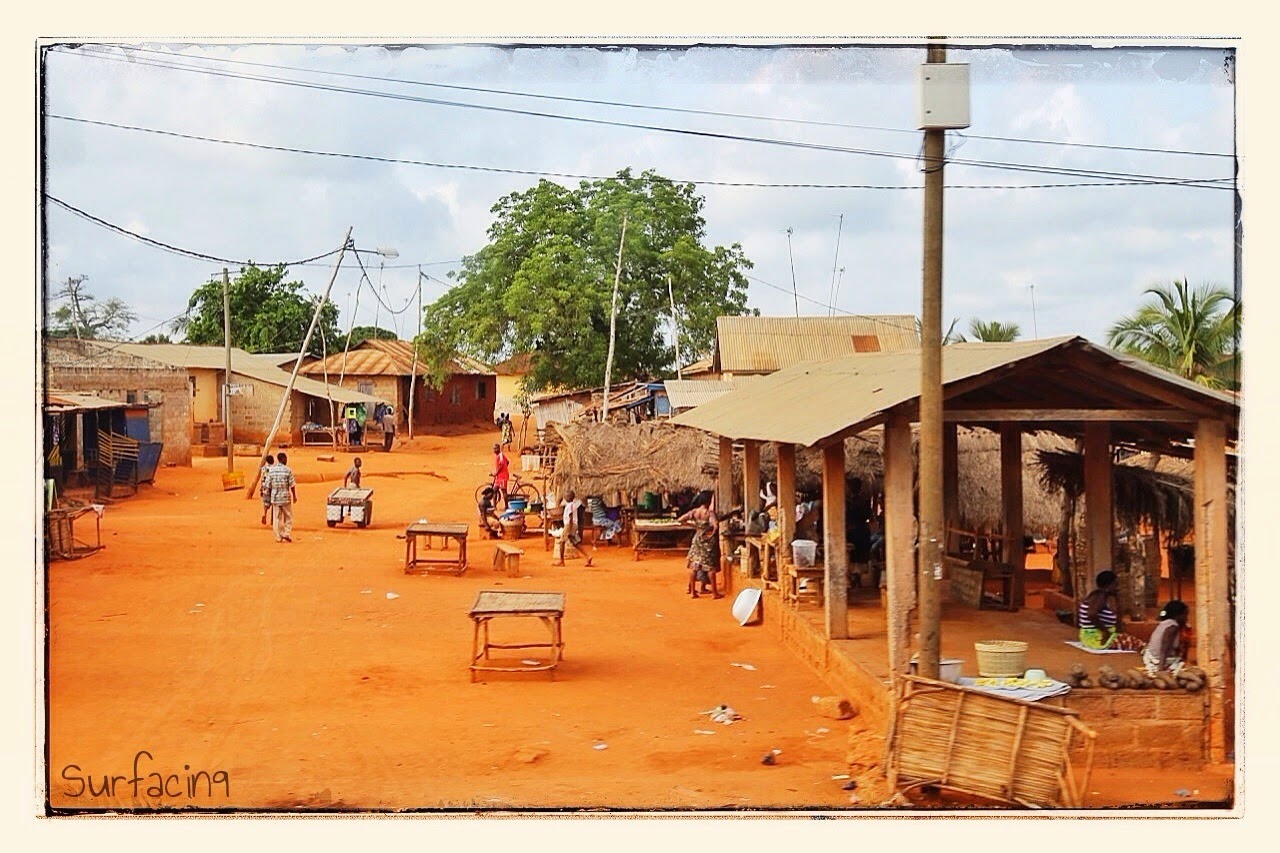Exploring West Africa with Silversea's Silver Explorer, starting in Accra, Ghana on 10 April 2013 and ending in Dakkar, Senegal on 26 April 2013.
April 12th, 2013
Population of Togo (2013 estimate): 7.15 million
Population of Lomé, the capital city (2010 census): (837,437)
Currency: 485 (CFA franc) ~ US$1
Demonym (people from Togo are called): Togolese
GDP per capita (2012 estimate) = US$ 584 (in Kuwait it’s $45,824)
HDI (2010): 0.459, i.e. 159th
As soon as we docked in Lomé we got into a tour bus. We had police escorts in front of the bus as well as in the back of the bus. Without their help it would’ve been impossible for us to get to Kpalimé (121km away) and back within the same day.
The asphalt road we drove on branched into colorful dirt roads. People traded all kinds of things by the sides of the roads. All text was written in french. Togo gained its independence from France in 1960. Everyone was on motorbike. Drivers wearing yellow shirts were taxi bikes. You could hop on the back seat and enjoy the fresh air to your destination.
On our way to Kpalimé we stopped at a bush school, which was in a traditional Ewa village. We received a very warm welcome from the locals. Song and dance, football and cheers, women and children, all dressed up for the occasion.
The students at the bush school were amazing. If somehow we could get the the world to care more about children’s education I believe we’d be able to erase poverty within a single generation.
 |
| A school teacher with his students |
 |
| One of the classrooms in the village |
 |
| This is what a typical classroom looks like in a West African village |
The Ewe are an ethnic group located in Togo. The Ewe are a patrilinear people; the founder of a community was the established chief, and was then usually succeeded by his paternal relatives. In modern times, chiefs are generally elected by consensus and get advice from elders. There are a number of guidelines regarding the behavior of chiefs. They are expected to keep their heads covered in public, and are not to be seen drinking. The people see the chief as the communicator between the every day world and the world of the ancestors. The chief must always keep a clear mind.
The Ewe have an intricate collection of dances, which vary between geographical regions and other factors.
One such dance is the Adevu. This is a professional dance that celebrates the hunter. They are meant both to make animals easier to hunt and to give animals a ritual 'funeral' in order to prevent the animal's spirit from returning and harming the hunter.
There are also war dances, peace dances, dances for art and display, dances to invite ancestors to sacred occasions into a shrine.
Before we got back to our ship, we attended a Voodoo ceremony.. The next post will be devoted to Voodoo!






No comments:
Post a Comment